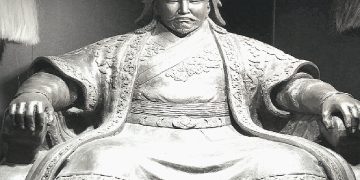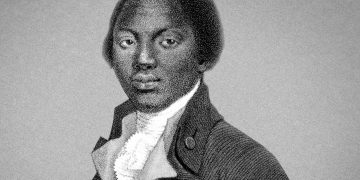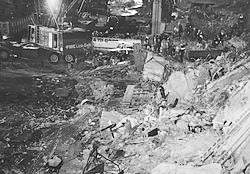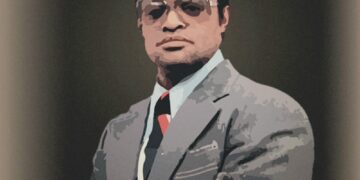1. What is this movie about?
This film is about how the main thing – life is made up of little things or is destroyed by little things. About envy and pride, about meanness and repentance, about different languages - in the semiotic sense – of judges and defendants. The fact that the truth is sometimes unclear even to contemporaries, even to participants in events, if it exists at all. About who is to blame, and that everyone is sorry. On the life and death of marranes in the face of the Inquisition.
2. Who owns the idea of its creation?
The idea belongs to me, but the creator of the cartoon, of course, is an artist.
3. What team worked on it?
The entire cartoon was drawn by the artist Yekaterina Kravtsova (if not to mention Goya and the medieval miniaturists, whose works are mounted in the video series), the musician Grigory Sandomirsky reduced the sound, and the roles were played by a variety of people – not professional actors at all. I find the undoubted advantage and charm in the fact that this is not an acting reading, that everyone “writes how he breathes” – he says, as he usually says, especially if you tease him a little or piss him off. In some cases, the choice of readers seems to me to be extremely successful. I will not list everyone here by name – everyone is named in the credits, and to all my deep gratitude.
4. What is the animated documentary genre ?
There are variations within this category. There are two necessary conditions: firstly, animation, and secondly, about real events. It can be events of personal history or world history or a combination of one with the other. Remember the “Waltz with Bashir”, which is called the first full-length animated documentary, or a very recent wonderful example – “You know, mother, where have I been?” Rezo and Levan Gabriadze. But subject to these two conditions, the question remains: where does the text come from? These may be memories, like those of Gabriadze, or interviews, as in the short animated film “I Met a Walrus” based on an interview with John Lennon. We are dancing from the text – it contains the historicity and documentary of our film, although the case of the candlestick of Marina Gonzalez has never been in this form – this is a construct.
We believe that historical sources of different types, dating from different eras – from antiquity to the recent past, have rich artistic potential, and, with the goal of conveying to the audience Zeitgeist and the voice of people of that era with maximum authenticity and maximum expressiveness, it is much more productive to stage, film or to animate the sources themselves, rather than literary works (although authentic texts, of course, can be more difficult to read and require a certain preparedness and (or) greater concentration from the public).
5. What are the specifics of writing a script for a historical documentary?
The script, or, if you like, the play “The Candlestick Case”, according to which the cartoon was shot, is not a statement of one specific inquisition process, but is constructed from fragments of various cases from the archives of the Spanish and colonial tribunals. Thus, the composition and plot are copyrighted, and the entire text is completely documentary.
Fragments of the Inquisition documents selected for the play and the animated film The Candlestick Case, in contrast to the well-known literary works that touch upon the Spanish Inquisition, do not cover big politics, but the world of ordinary people with their feelings and shortcomings, families and neighbors, everyday life and conflicts, not too clear religious principles, attempts to escape from the Inquisition and even use it – with its help to settle scores with enemies. The Inquisition imposed its own stencil on this life, retold this everyday life in its own – theological and official – language, asked its questions and received the answers it needed, laid the blurry religious identity of the victims in its classification. The potential, if not catharsis, then a powerful emotional impact on the viewer, is in my opinion,
6. What difficulties did you encounter while working on the film?
The artist says that one of the difficult tasks is how to fill up time while maintaining a rather long script text. The result was an almost hour-long cartoon. At the premiere, the university public carefully watched the film until the end and then asked questions for a long time. But will the creator of the cartoon wonder, is the diligent less prepared audience just as diligent?
7. How do you imagine its viewers and target audience?
His Spanish colleagues talk about the educational potential of the cartoon and are going to educate new generations of students on it. But my image of this cartoon and its functionality as probably appears from what was said above, goes beyond the scope of professional training and even education and, accordingly, my idea of its audience extends to every “proud grandson” and “friend of the steppes” existing in the Russian-speaking space “. Here, in fact, it is not necessary to be interested in the Inquisition as such. As reviews on social networks and on YouTube already show, the perception of this cartoon by the modern Russian public is naturally enriched with relevant subtext – parallels with episodes from the recent past – and leads to universal questions about totalitarian power, society, human nature: about why repressions do not lead to the solidarity of the population, but to dissociation and denunciation, who is responsible for the terror and death of many people – ideology, the supreme power, specific performers or “ordinary” people who collaborate with the repressive machine or even drive it, etc. . Some of the viewers saw Zoshchenko here, and someone made a subtle observation that the Edict of Faith with a list of signs of Judaism, which is read in the cartoon by Psya Korolenko, is nothing more than a prosaic version of his song, “Yak Jews Have a Holiday Comes “. So, it seems to me that there are opportunities for direct perception, for revealing subtexts, and for postmodern reading. specific performers or “ordinary” people collaborating with the repressive machine or even pushing it, etc. Some of the viewers saw Zoshchenko here, and someone made a subtle observation that the Edict of Faith with a list of signs of Judaism, which is read in the cartoon by Psya Korolenko, is nothing more than a prosaic version of his song, “Yak Jews Have a Holiday Comes “. So, it seems to me that there are opportunities for direct perception, for revealing subtexts, and for postmodern reading. specific performers or “ordinary” people collaborating with the repressive machine or even pushing it, etc. Some of the viewers saw Zoshchenko here, and someone made a subtle observation that the Edict of Faith with a list of signs of Judaism, which is read in the cartoon by Psya Korolenko, is nothing more than a prosaic version of his song, “Yak Jews Have a Holiday Comes “. So, it seems to me that there are opportunities for direct perception, for revealing subtexts, and for postmodern reading. this is nothing more than a prosaic version of his song, “Yak for the Jews, the holiday is coming”. So, it seems to me that there are opportunities for direct perception, for revealing subtexts, and for a postmodern reading. this is nothing more than a prosaic version of his song, “Yak for the Jews, the holiday is coming”. So, it seems to me that there are opportunities for direct perception, for revealing subtexts, and for postmodern reading.











